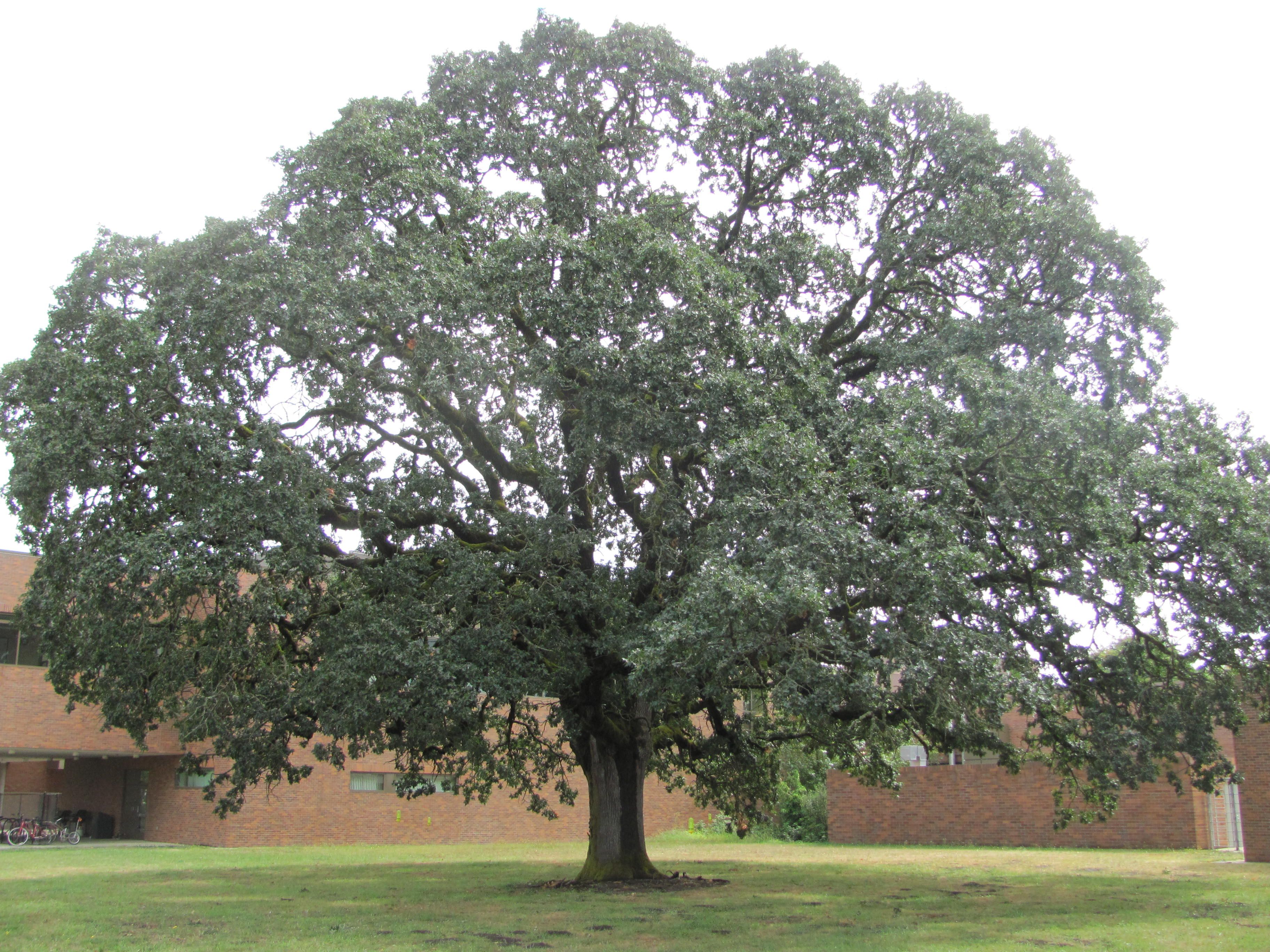Interested in learning more about the trees at OSU? Check out the Digital Tree Map to view the location of 280 tree species around the Corvallis Campus! Campus trees provide many benefits, including carbon sequestration, improved air quality, habitat for wildlife, and aesthetic value.
Oak Creek is the least developed and largest of the watersheds in Corvallis. Named for the Oregon White Oak savanna and woodlands that once flourished in this watershed, Oak Creek is 15 miles long and a tributary of Marys River. 40% of Oak Creek is managed by the university.
OSU has led several focused efforts to enhance Oak Creek, one of the area's most significant natural features. Restoration activities have primarily taken place near the Main Campus (30th St. to 35th St.) and the Department of Animal Sciences' Livestock Facilities (west of the OSU Dairy Center).
Periodic Oak Creek restoration activities near the Main Campus (30th St. to 35th St.) include:
OSU's College of Agricultural Sciences (CAS) is committed to restoring and protecting areas of the creek that wind through livestock facilities. Supported by past funding from the U.S. Department of Agriculture and the Oregon Watershed Enhancement Board, CAS has carried out restoration activities such as creating wildlife habitats and riparian buffers along more than five miles of streams that include Oak Creek and its tributaries.
Other restoration activities include:
In August 2007, a metal dam installed in the early 20th century was removed from Oak Creek near the Oak Creek Center for Urban Horticulture. The effort was a collaboration between OSU and the City of Corvallis to return the creek to a more natural state, protecting the highly valuable riparian corridor Oak Creek provides.
The OSU Landscape Shop is responsible for maintaining the grounds of the OSU campus. This includes lawns, sidewalks, trees, shrubs, and other open areas on the 423-acre main campus.
Each year since 2010, OSU has been awarded "Tree Campus USA" status by the Arbor Day Foundation and the Oregon Department of Forestry. This program recognizes college campuses for their excellence in tree planting, care, and stewardship.
The Oregon State main campus has over 5,000 cataloged trees (not including the many trees in the riparian corridor along Oak Creek and the agriculture lands). The tallest tree at OSU is 140 feet tall, the largest trunk diameter is nearly 8 feet, and the largest canopy on campus is over 100 feet wide.
Among thousands of trees are several state and locally recognized Heritage trees. Heritage trees are described as trees that are honored for their unique size, age, and historical or horticultural significance. Some noticeable Heritage trees on the OSU campus include:

|

|
|
Oregon White Oak Tree |
The Moon Tree |
OSU landscapers have taken many steps to reduce their operation's impact on the environment:
Completed in 2011, People's Park is a contemplative, quiet space within the core of campus. People's Park demonstrates sustainable practices in landscaping. For example, People's Park is filled with plants that have low irrigation requirements and attract birds, butterflies, and beneficial insects so pesticides are not needed.
Click here for more information about People's Park.